 W
WCount Rutger von Ascheberg, also known as Roger von Ascheberg was a soldier, officer and civil servant in Swedish service, being appointed Lieutenant General in 1670, General in 1674, Field Marshal in 1678, Governor General of the Scanian provinces, in 1680, and Royal Councilor in 1681.
 W
WJohan Banér was a Swedish Field Marshal in the Thirty Years' War.
 W
WBernard of Saxe-Weimar was a German prince and general in the Thirty Years' War.
 W
WMarchese Alessandro dal Borro was a Tuscan nobleman and general. He became a Field Marshal of the Holy Roman Empire. He was well known for his obesity.
 W
WJohann Jakob von Bronckhorst, named Graf Anholt, was Count of Bronckhorst-Batenburg and Imperial fieldmarshal during the Thirty Years' War.
 W
WCharles II Albert de Longueval, 3rd count of Bucquoy was a military commander, holder of high office, and nobleman in the Habsburg realms of the Low Countries and Bohemia. He was the son of Charles Bonaventure de Longueval, 2nd Count of Bucquoy and Maria Magdalena, Countess of Biglia.
 W
WCharles Bonaventure de Longueval, 2nd Count of Bucquoy was a military commander who fought for the Spanish Netherlands during the Eighty Years' War and for the Holy Roman Empire during the Thirty Years' War.
 W
WAndrea Cantelmo was a Neapolitan commander of Habsburg armies during the Thirty Years' War, the War of the Mantuan Succession, the second phase of the Eighty Years' War and the Franco-Spanish War (1635–59).
 W
WGirolamo Caraffa, Marquis of Montenegro was a general in Spanish and Imperial service from Italian descent.
 W
WMarcu Cercel, also known as Marco Cercel, Marcu-Vodă, or Marco-Voevod, was a Wallachian adventurer who served as Prince of Moldavia in July–September 1600. His father, Petru Cercel, was Prince of Wallachia in the 1580s, and alleged son of Pătrașcu the Good. This probably meant that Marcu was a nephew of Michael the Brave, who in 1599–1601 managed to control Wallachia, Moldavia, and the Principality of Transylvania, making Marcu his representative or regional co-ruler. It is not precisely known who Marcu's mother was, but she was likely Turkish and related to the Köprülüs; she may be the same as Lady Stanca, who went on to marry Aaron the Tyrant, also Prince of Moldavia.
 W
WHenri Duval, Count of Dampierre (1580—1620), often known simply as Henri de Dampierre, was a commander of imperial forces during the Bohemian Revolt that initiated the Thirty Years' War.
 W
WGil or Gilles De Haes (1597–1657), sometimes known as Guldehasius, was a Flemish soldier of the Eighty Years War, the Thirty Years War and the Cretan War (1645–69), who rose through the ranks to be a general.
 W
WRené Descartes was a French philosopher, mathematician, and scientist who invented analytic geometry, linking the previously separate fields of geometry and algebra. He spent a large portion of his working life in the Dutch Republic, initially serving the Dutch States Army of Maurice of Nassau, Prince of Orange and the Stadtholder of the United Provinces. One of the most notable intellectual figures of the Dutch Golden Age, Descartes is also widely regarded as one of the founders of modern philosophy and algebraic geometry.
 W
WFrancis Charles of Saxe-Lauenburg was a prince of Saxe-Lauenburg and a general during the Thirty Years' War.
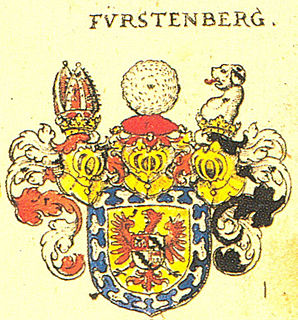 W
WEgon VIII of Fürstenberg-Heiligenberg was Imperial Count of Fürstenberg-Heiligenberg (1618–1635) and Bavarian Field-marshal, and an important military leader in the Thirty Years' War.
 W
WMatthias Gallas, Graf von Campo und Herzog von Lucera was an Austrian soldier, who first saw service in Flanders, then in Savoy with the Spaniards, and subsequently joined the forces of the Catholic League as captain during the Thirty Years' War.
 W
WGottfried, Count Huyn, Baron of Geleen or Godefridus Comes ab Huyn Baro de Geleen, rose to the rank of Field Marshal in the service of the Holy Roman Emperor during the 30 Years War.
 W
WMelchior Graf von Gleichen und Hatzfeldt was an Imperial Field Marshal, who fought in the Thirty Years' War under Albrecht von Wallenstein and Matthias Gallas.
 W
WRalph Hopton, 1st Baron Hopton,, was an English politician, soldier and landowner. During the 1642 to 1646 First English Civil War, he served as Royalist commander in the West Country, and was made Baron Hopton of Stratton in 1643.
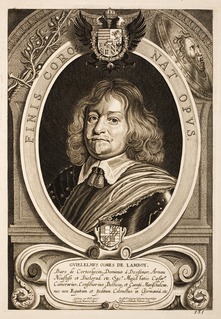 W
WGuillaume III de Lamboy de Dessener, 1590 to 1659, was a Field Marshal, in the Imperial Army, who served in the 1618 to 1648 Thirty Years War, and the 1635 to 1659 Franco-Spanish War.
 W
WCount Walter Leslie was a Scottish soldier and diplomat. He gained the positions of Imperial Field Marshal, Count of the Holy Roman Empire, Governor on the Croatian-Slavonian Military Frontier, Imperial Ambassador to Naples, Rome in 1645 and to Constantinople in 1665–1666.
 W
WAlexander Leslie, 1st Earl of Leven was a Scottish soldier in Swedish and Scottish service. Born illegitimate and raised as a foster child, he subsequently advanced to the rank of a Swedish Field Marshal, and in Scotland became Lord General in command of the Army of the Covenanters, a privy councillor, captain of Edinburgh Castle, Lord Balgonie and Earl of Leven. In England he commanded the Army of the Solemn League and Covenant and was senior commander of the Army of Both Kingdoms (1642–1647). Leslie served in the Thirty Years' War, the Bishops' Wars, and most of the English Civil War, fighting primarily in the First English Civil War. Leslie would live a long life, dying roughly at the age of 80 or 81.
 W
WLouis Henry of Nassau-Dillenburg, was Count, and from 1654 Prince of Nassau-Dillenburg. During the Thirty Years' War, he was a senior officer. He climbed to the rank of Major General. Before 1635, he served on the Protestant side; after 1635, he served in the imperial army.
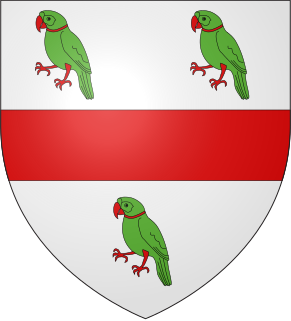 W
WRichard Lumley, 1st Viscount Lumley was an English royalist and military commander. He was the grandfather of Richard Lumley, 1st Earl of Scarbrough.
 W
WJohn Gaspar Ferdinand de Marchin, or Marsin, Comte de Granville (1601–1673) was a Walloon military commander from the Spanish Netherlands.
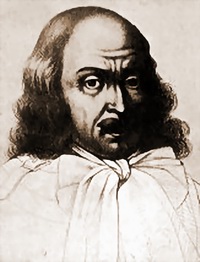 W
WFranz Freiherr von Mercy, Lord of Mandre and Collenburg, was a German general in the Thirty Years' War who fought for the Habsburg side and was commander-in-chief of the Bavarian army from 1643 to 1645.
 W
WKaspar Kornelius Mortaigne de Potelles was a Flemish General-Lieutenant who fought during the course of the Thirty Years' and Hessian Wars.
 W
WNicolae Pătrașcu, Petrașco, or Petrașcu, also styled Nicolae Vo(i)evod, was the titular Prince of Wallachia, an only son of Michael the Brave and Lady Stanca, and a putative grandson of Pătrașcu the Good. His early childhood coincided with Michael's quick rise through the ranks of boyardom, peaking in 1593, when Michael became Prince and Nicolae his heir apparent. As he began a quest to emancipate Wallachia from the Ottoman Empire, Michael used his son as a party to alliances with the Holy Roman Empire and the Principality of Transylvania, proposing him as either a hostage or a matrimonial guarantee. While entering the Long Turkish War on the Christian side, Michael also negotiated a settlement with the Ottomans, again offering Nicolae as a guarantee.
 W
WGottfried Heinrich Graf zu Pappenheim was a field marshal of the Holy Roman Empire in the Thirty Years' War.
 W
WCarl von Rabenhaupt was a Bohemian Hussite nobleman who fought in Saxon, Dutch and Hessian service during the Thirty Years War and came out of retirement to command a Dutch regiment in the Franco-Dutch War.
 W
WBernardino de Rebolledo y Villamizar, Earl of Rebolledo and Graf (Count) of the Holy Roman Empire was a Spanish poet, soldier and diplomat. He was a descendant of the 1st Count of Rebolledo, don Rodrigo, who received his surname and title from the king of Asturias and León don Ramiro I in 815 during the Reconquista.
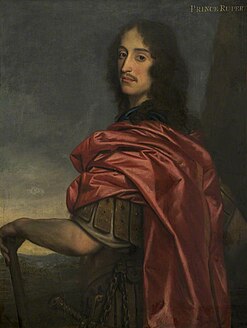 W
WPrince Rupert of the Rhine, Duke of Cumberland, was a German-English army officer, admiral, scientist and colonial governor. He first came to prominence as a Royalist cavalry commander during the English Civil War. Rupert was the third son of the German Prince Frederick V of the Palatinate and Elizabeth, eldest daughter of King James VI and I of Scotland and England.
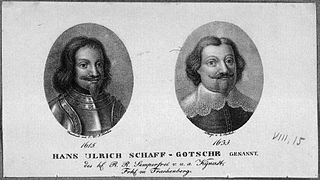 W
WHans Ulrich von Schaffgotsch was a Silesian nobleman and Generalfeldwachtmeister who fought in the Silesian front of the Thirty Years' War. He was falsely convicted of treason and executed following a purge within the army of the Holy Roman Empire that targeted officers associated with former Generalissimo Albrecht von Wallenstein.
 W
WJohann Tserclaes, Count of Tilly was a field marshal who commanded the Catholic League's forces in the Thirty Years' War. From 1620–31, he had an unmatched and demoralizing string of important victories against the Protestants, including White Mountain, Wimpfen, Höchst, Stadtlohn and the Conquest of the Palatinate. He destroyed a Danish army at Lutter and sacked the Protestant city of Magdeburg, which caused the death of some 20,000 of the city's inhabitants, both defenders and non-combatants, out of a total population of 25,000.
 W
WLennart Torstensson, Count of Ortala, Baron of Virestad, was a Swedish Field Marshal and military engineer.
 W
WAlbrecht Wenzel Eusebius von Wallenstein, also von Waldstein, was a Bohemian military leader and statesman who fought on the Catholic side during the Thirty Years' War (1618–1648). His successful martial career made him one of the richest and most influential men in the Holy Roman Empire by the time of his death. Wallenstein became the supreme commander of the armies of the Habsburg Emperor Ferdinand II and was a major figure of the Thirty Years' War.
 W
WCount Johann von Werth, also Jan von Werth or in French Jean de Werth, was a German general of cavalry in the Thirty Years' War.
 W
WFältmarskalk Carl Gustaf Wrangel was a Swedish statesman and military commander who commanded the Swedish forces in the Thirty Years', Torstenson, Bremen, Second Northern and Scanian Wars.